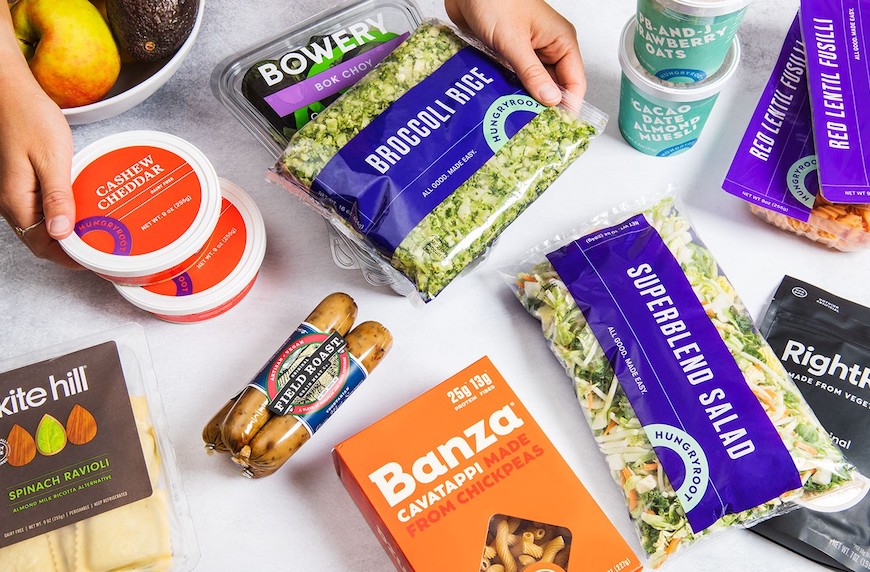The Points Guy
For elite status seekers, the new year comes with what’s dreaded most — elite status qualification metrics resetting to zero.
Travel elite status operates under the principle that you requalify year after year. Last year, you hopefully earned the status — or statuses — that you’ll enjoy this year. And unless you have lifetime status, you’ll likely need to requalify this year to extend your status for another year.
Luckily, several major loyalty programs offer status rollover when you go above and beyond and other bonuses for holding a credit card or requalifying for elite status. However, these don’t always post simultaneously, so you should monitor your accounts to ensure everything posts properly.
With that in mind, here are the elite status rollovers you should expect this month and how to know if you’re eligible.
Delta Air Lines rollover MQMs
KYLE OLSEN/THE POINTS GUY
Earning Delta status requires Medallion Qualifying Miles (MQMs) or Medallion Qualifying Segments (MQSs) and Medallion Qualifying Dollars (MQDs). Here’s how many MQMs, MQSs and MQDs you must earn in 2023 to extend your Delta status.
Silver Medallion Status: 25,000 MQMs or 30 MQSs + 3,000 MQDs.
Gold Medallion Status: 50,000 MQMs or 60 MQSs + 8,000 MQDs.
Platinum Medallion Status: 75,000 MQMs or 100 MQSs + 12,000 MQDs.
Diamond Medallion Status: 125,000 MQMs or 140 Medallion Qualifying Segments + 20,000 MQDs.
Delta will roll over every MQM you earned above your status tier last year. For example, let’s say you’re a Platinum Medallion, but you finished 2022 with 105,000 MQMs. That means you’ll start this year with 30,000 MQMs.
To calculate rollover MQMs, subtract your status tier requirement from your 2022 total MQMs.
Unfortunately, MQSs and MQDs don’t roll over. But if you’re looking to accrue MQDs for a fraction of the normal price, check out our guide on earning MQDs with partner airlines. That’s how one TPG staffer largely requalified for Diamond Medallion with a trip to South Africa.
Rollover MQMs are currently posting in our surveyed SkyMiles accounts.
Related: Battle of the Airlines: Why I think Delta Air Lines is the best
United Airlines 2023 kick-off PQPs
ZACH GRIFF/THE POINTS GUY
Before we shift to hotel status, here’s a reminder for those who qualified for United status. You’ll receive a bonus Premier Qualifying Points (PQPs) deposit based on the status you earned in 2022. Here’s what you can expect:
Premier Silver: 500 PQPs.
Premier Gold: 1,000 PQPs.
Premier Platinum: 1,500 PQPs.
Premier 1K: 2,500 PQPs.
The PQP deposit will help you requalify for status. Here’s what you’ll need to earn this year to earn United status:
Tier
PQPs + Premier Qualifying Flights (PQFs)
Only PQPs
Premier Silver
4,000 PQPs + 12 PQFs
5,000 PQP
Premier Gold
8,000 PQPs + 24 PQFs
10,000 PQP
Premier Platinum
12,000 PQPs + 36 PQFs
15,000 PQP
Premier 1K
18,000 PQPs + 54 PQFs
24,000 PQP
United will also provide a PQP deposit in 2024 for the status you earn in 2023.
In our tests, United is yet to make its 2023 PQP deposits in its Premier member MileagePlus accounts.
Related: How to get maximum value from the United MileagePlus program
Hilton rollover nights
KYLE OLSEN/THE POINTS GUY
Hilton rolls over any excess nights you earned above your status requirements starting with its entry-level status. Here’s what it takes to earn Hilton status this year:
Silver: 10 nights or four stays or 25,000 base points.
Gold: 40 nights or 20 stays or 75,000 base points.
Diamond: 60 nights or 30 stays or 120,000 base points.
Last year, however, the status requirements were reduced. Silver required seven nights, Gold required 28 nights, and top-tier Diamond status could be earned with 42 nights. And since Hilton rolls over any nights in excess of your status requirement (note, only nights roll over, not stays or base points), you could be well on your way to requalifying for status in 2023 without stepping foot into a Hilton lobby this year.
For example, if you earned 38 nights last year (10 nights above the requirement for Gold), you would have 10 rollover nights this year. To calculate rollover nights, subtract the 2022 elite night requirement from your 2022 elite nights.
Alternatively, you can earn Diamond status by holding the Hilton Honors American Express Aspire Card.
The information for the Hilton Honors American Express Aspire Card has been collected independently by The Points Guy. The card details on this page have not been reviewed or provided by the card issuer.
At the time of writing, Hilton rollover nights are yet to post in our tested accounts.
Related: Reflecting on my 1st year as a Hilton Honors Diamond member
Hyatt credit card nights
KYLE OLSEN/THE POINTS GUY
Requalifying for Globalist is one of my status priorities this year. Here’s what it takes to earn Hyatt status this year:
Discoverist: 10 elite nights or 25,000 base points ($5,000 in Hyatt spending). Or, hold either of Hyatt’s credit cards.
Explorist: 30 elite nights or 50,000 base points ($10,000 in Hyatt spending).
Globalist: 60 elite nights or 100,000 base points ($20,000 in Hyatt spending).
World of Hyatt offers the World of Hyatt Credit Card and the World of Hyatt Business Credit Card.
With the World of Hyatt credit card, you automatically get five tier-qualifying nights each year. You’re also eligible to earn two additional tier-qualifying night credits for every $5,000 you spend on the card.
The business card offers five elite nights for every $10,000 that you spend on the card annually.
In the accounts we tested, Hyatt credit card nights haven’t yet been posted.
Related: 9 things I’ve learned after being a Hyatt Globalist for 5 years
IHG rollover nights
KYLE OLSEN/THE POINTS GUY
Like Hilton, IHG One Rewards rolls over any qualifying nights in excess of Gold, Platinum and Diamond Elite. A notable exception is Silver Elite, so any nights earned in excess of Silver Elite (between 11 and 19 nights) won’t roll over.
Rollover nights are valid for up to one calendar year. Here’s what it takes to earn IHG One Rewards status this year:
Silver Elite: 10 nights.
Gold Elite: 20 nights or 40,000 elite qualifying points.
Platinum Elite: 40 nights or 60,000 elite qualifying points.
Diamond Elite: 70 nights or 120,000 elite qualifying points.
Let’s assume you earned 62 elite qualifying nights in 2022. Since that’s 22 nights in excess of Platinum Elite, IHG will roll over 22 elite qualifying nights. That means that you’ll qualify for at least Gold Elite this year.
These rollover nights have started to post to member accounts per our tests.
Related: 7 ways to earn more IHG One Rewards points for your next redemption
Marriott credit card nights
KYLE OLSEN/THE POINTS GUY
Finally, like with Hyatt, some Marriott Bonvoy members earn elite nights just for holding a Marriott cobranded card. Here’s what it takes to earn Marriott Bonvoy status this year:
Silver Elite: 10 elite nights.
Gold Elite: 25 elite nights.
Platinum Elite: 50 elite nights.
Titanium Elite: 75 elite nights.
Ambassador Elite: 100 elite nights (plus $23,000 in annual qualifying spending).
My colleague has written a complete guide to earning Marriott Bonvoy status from cobranded credit cards, but I’ll highlight that you can earn up to 40 elite nights per year from credit cards — 15 nights from a business card and up to 25 nights from a personal card like the Marriott Bonvoy Brilliant™ American Express® Card. That’s just 35 nights away from Titanium Elite status.
In our tests, Marriott credit card nights have already been posted.
Related: Marriott to increase Ambassador Elite spending, bring back personal ambassadors in 2023
Bottom line
While no one likes seeing their elite status metrics reset to zero, some programs give you a head start. So far, it appears that Marriott is the only program that has already posted its credit card nights.
We always recommend auditing your loyalty accounts, but consider waiting until the end of the month before contacting your loyalty program about missing elite status rollovers, deposits or credit card nights.








